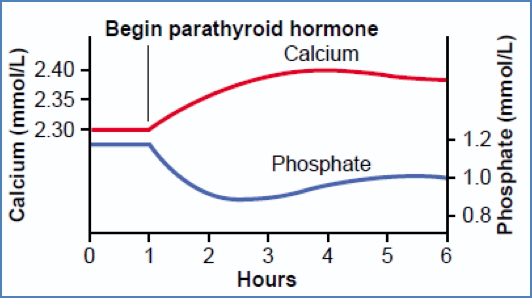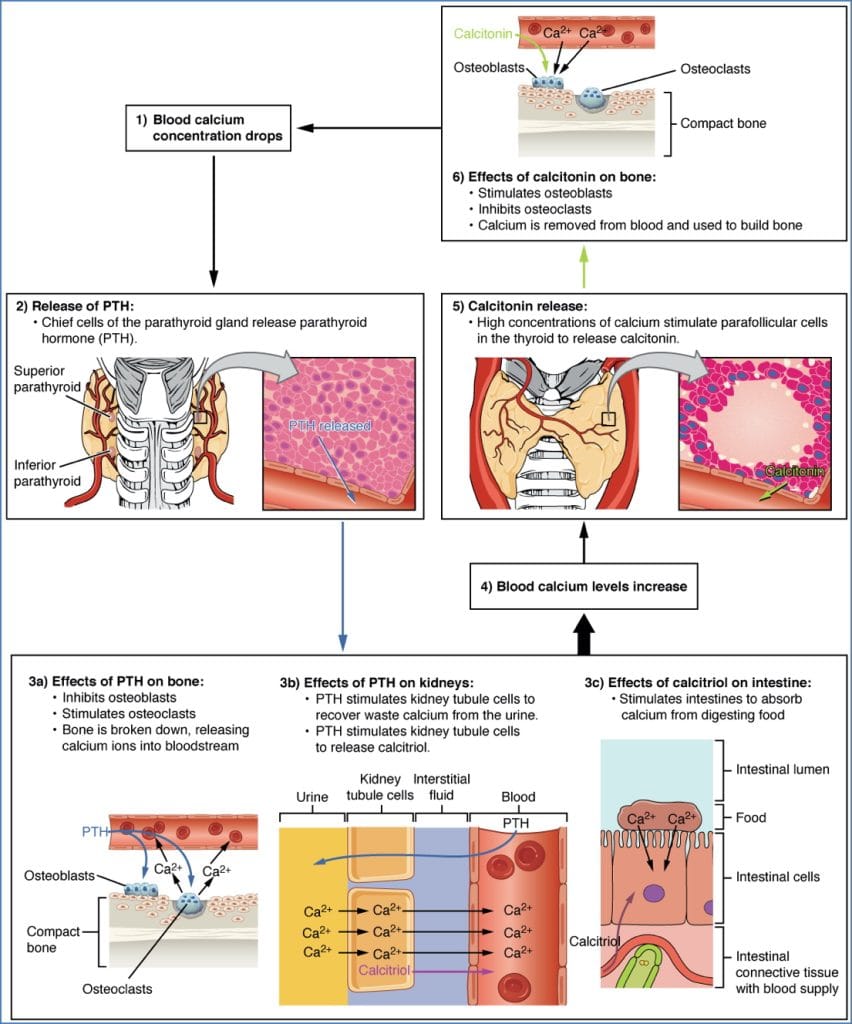Table of Contents
Overview – Parathyroid Glands
The parathyroid glands are small but critically important endocrine structures responsible for maintaining calcium and phosphate balance in the body. Through secretion of parathyroid hormone (PTH), they regulate bone metabolism, renal function, and gastrointestinal calcium absorption, making them essential for neuromuscular and skeletal health. A detailed understanding of the parathyroid glands is vital for managing common endocrine disorders encountered in clinical practice.
General
- Four small endocrine glands located on the posterior surface of the thyroid gland.
- Typically two glands on each side (left and right).
- Each gland is approximately the size of a grain of rice.
- Unlike many other endocrine glands, the parathyroids function independently of hypothalamic control.
Anatomy
Macrostructure
- Situated on the posterior aspect of the thyroid gland.
- Paired arrangement: 2 glands on the left, 2 on the right.
Microstructure
- Densely packed cell clusters (no follicular arrangement like the thyroid).
- Two primary cell types:
- Chief Cells: Secrete parathyroid hormone (PTH).
- Oxyphil Cells: Function remains unknown.

Physiology
- Secretes parathyroid hormone (PTH), which plays a vital role in calcium and phosphate homeostasis.
- Crucial for:
- Stability of excitable tissues (e.g., nerves, muscles).
- Bone integrity and remodeling.
Parathyroid Hormone (PTH)
Regulation of Secretion
- Stimulated by: Low extracellular calcium levels (highly sensitive).
- Inhibited by: Elevated extracellular calcium levels (highly sensitive feedback).
Primary Aims
- Increase plasma calcium levels.
- Decrease plasma phosphate levels.

Mechanism of Action
On Bone
- Stimulates osteoclast activity.
- Mobilises calcium and phosphate from the bone matrix.
- Increases circulating calcium levels.
On Kidneys
- Increases renal calcium reabsorption → reduces urinary calcium loss.
- Increases phosphate excretion → lowers plasma phosphate levels.
- Activates vitamin D (calcitriol), enhancing intestinal calcium absorption.
On Gastrointestinal Tract
- Indirectly increases calcium absorption via activated vitamin D.

Summary – Parathyroid Glands
The parathyroid glands autonomously regulate calcium and phosphate balance through the secretion of parathyroid hormone. By acting on bone, kidneys, and indirectly on the gut, PTH maintains stable calcium levels essential for multiple physiological processes. For a broader context, see our Endocrine Overview page.